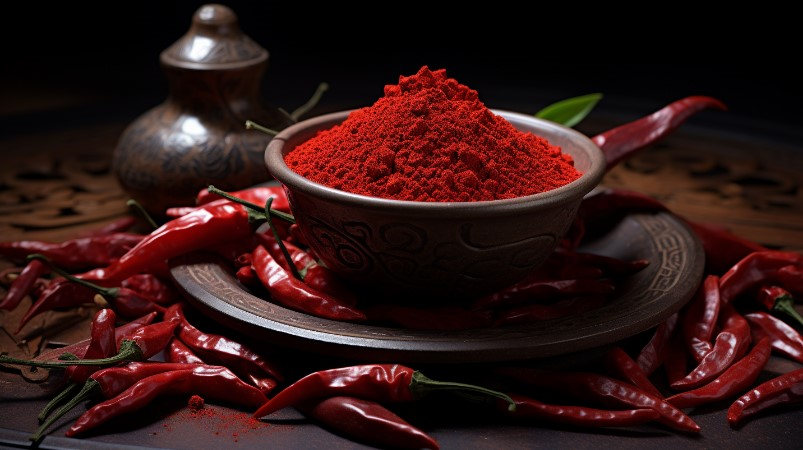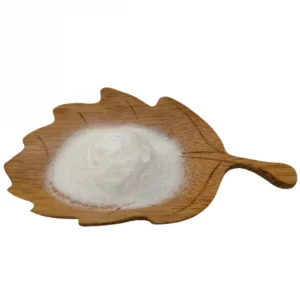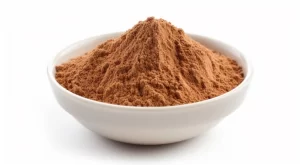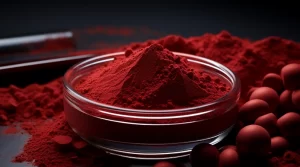고추 붉은 색소 추출 및 응용에 대한 연구 진행 상황

Capsanthin is a tetraterpenoid orange-red pigment present in mature red pepper fruits. It is mainly composed of capsanthin (C40H56O3), capsorubin (C40H56O4) and yellow pigment. It has bright color and high color value. It has strong coloring power and good color retention. Studies have proven that capsicum red pigment also has the effect of regulating body fat metabolism, immunity, anti-radiation and reducing the incidence of certain types of cardiovascular diseases.
Capsicum red pigment is widely used as a coloring agent and is listed as a Class A pigment by the Food and Agriculture Organization of the United Nations (FAO) and the World Health Organization (WHO). According to my country’s GB 2760-2014 “Standards for the Use of Food Additives”, capsicum red pigment can be used in food, sauces, ice cream, ice cream, biscuits, cooked meat and other products.
고추 붉은 색소 extraction
Appropriate extraction methods can reduce the content of orange and yellow substances and non-pigment components in capsicum pigments, thereby increasing the proportion of capsanthin and capsorubin and increasing the color value. Judging from the current extraction methods of capsicum red pigment, the common ones include solvent extraction, ultrasonic extraction, microwave-assisted extraction and supercritical fluid extraction.
Solvent extraction method
용매 추출은 캡산틴 추출에 일반적으로 사용되는 방법으로, 캡산틴이 유기 용매에 용해된다는 사실을 활용합니다. 구체적인 추출 과정은 성숙한 말린 고추를 가루로 만든 다음 에탄올, 아세톤 및 기타 물질과 같은 유기 용매와 혼합하여 고추 올레오레신을 준비한 다음 증류, 분리 등과 같은 일련의 절차를 거쳐 최종적으로 고추 붉은 색소 를 얻는 것입니다.
용매 추출법의 가장 큰 장점은 비용이 저렴하고 고가의 정교한 장비가 필요하지 않다는 점이며, 단점은 추출된 캡산틴의 순도가 충분하지 않고 유기 시약 잔류물이 많다는 것입니다. 현재 고추 붉은 색소를 생산하는 대부분의 국내외 제조업체는이 방법을 사용하여 추출하지만 점차적으로 제거되는 추세를 보이고 있습니다.
Ultrasonic extraction method
The principle of the ultrasonic extraction method is to use ultrasonic waves to crush the peppers more finely, so that the components in the peppers can be better integrated in the extraction solvent, and finally obtain capsicum red pigment with higher purity. Ultrasonic extraction method has similarities with solvent extraction method, but it is faster, more efficient and lower cost than solvent extraction method. The most important thing is that it is natural and environmentally friendly, so it is more popular.
Microwave-assisted extraction
마이크로파 추출이라고도 하는 마이크로파 보조 추출은 마이크로파와 전통적인 용매 추출 방법을 결합하여 형성된 새로운 기술입니다. 마이크로파를 이용한 고추 붉은 색소 추출은 저탄소, 환경 친화적이며 추출 효율이 높습니다.
supercritical fluid extraction method
초임계 유체 추출 방법은 압력 제어 및 온도 제어를 사용하여 고추에 대한 CO2의 용해 효과를 향상시키고 마지막으로 고추 붉은 색소를 선택적으로 추출합니다. 이 방법은 실온에서 구현할 수 있으며 이 방법에는 용매 잔류물이 없으며 추출된 캡산틴의 순도가 높습니다. 현재 고추 붉은 색소의 이상적인 추출 방법입니다.
Factors affecting the stability of capsicum red pigment
Capsicum red pigment is protected by cells in the pepper fruit. At this time, it is highly resistant to light and heat. However, after extraction, light, heat, oxygen, pH and metal ions will degrade it. After degradation, the olefin bond will be converted into a single unit. The bond may be broken, causing the conjugated structure to be destroyed, and the reason for fading is that photocatalytic oxidation and hydrolysis rearrangement reactions occur internally.
Effect of light and heat on the stability of capsicum red pigment
천연 카로티노이드는 주로 자연에서 올 트랜스 형태로 존재합니다. 80°C 이하의 온도는 고추 붉은 색소의 안정성에 거의 영향을 미치지 않습니다. 고온과 가열 시간은 색소 손실률에 영향을 미치는 주요 요인입니다. 빛과 열 조건에서 안료 분자는 에너지 준위 전환을 거쳐 시스 구조로 변합니다. 전자기 스펙트럼 파란색은 2~10nm 이동하여 안료 분자 사슬의 산화 및 파손을 가속화하여 스펙트럼이 자외선 영역으로 이동하여 고추색 안료가 분해되어 색을 잃게 합니다. 빛의 청색광과 자외선 조사는 일련의 산화, 재배열, 이성질화 및 기타 분해 반응을 일으켜 특히 7 ~ 8, 9 ~ 10 및 8 ~ 9 위치에서 고추 적색 안료의 색상 손실률을 증가시킵니다. 탄소-탄소 결합이 끊어져 궁극적으로 안료가 퇴색하게 됩니다.
Effect of oxygen on the stability of capsicum red pigment
산화제는 고추 붉은 색의 손실을 유발합니다. 퍼옥시다아제(POD)와 카탈라아제(CAT)를 첨가하면 활성산소에 의한 고추 붉은 색의 손상을 줄일 수 있습니다. VE, 차 폴리페놀 및 아스코르빌 팔미테이트와 같은 항산화제를 첨가하면 고추의 붉은 색을 보호 할 수 있습니다. 동일한 산소 함량에서 1% 카르노산을 사용한 고추 붉은 색소의 색상 유지율이 가장 높습니다.
Effect of irradiation on the stability of capsicum red pigment
연구에 따르면 방사선 조사량이 증가함에 따라 안료의 변색 손실이 심해지는 것으로 나타났습니다. 에스테르화 구조는 모노머보다 내방사선성이 강하고 적색 안료의 안정성이 황색 안료보다 높습니다. 조사 후 좋은 색상을 유지하려면 조사 선량을 4kGy 이하로 제어해야 합니다. 고추의 색소 중 70% ~ 80%는 주로 에스테르 형태로 존재합니다. 노란색 계열은 주로 불포화 지방산을 결합하고 빨간색 계열은 포화 지방산을 결합합니다. 빨간색과 노란색 고추 색소의 안정성 차이는 특수한 분자 구조와 지방산과 관련이 있을 수 있습니다. 구성, 다양한 카로티노이드 조합의 비율 및 비 카로티노이드 물질의 함량은 관련이 있습니다.
Effect of ultrasound on the stability of capsicum red pigment
Ultrasound, as an auxiliary method for extracting capsanthin from peppers, allows the peppers to fully contact and fuse with the extraction liquid, thereby improving the solvent extraction efficiency. However, ultrasound itself has a degradation effect on the carotenoids in capsicum. The hydroxyl radicals generated by ultrasound can cause the degradation and structural changes of zeaxanthin, resulting in the degradation of zeaxanthin and the blue shift of its spectrum. The impact of the ultrasonic process on β-carotene has two aspects: ① The thermal effect of rising temperature, ② The ultrasonic cavitation effect leads to pigment degradation.
Effects of pH and metal ions on the stability of capsicum red pigment
연구에 따르면 캡산틴은 광범위한 산 및 알칼리 내성을 가지며 4~10의 pH 범위 내에서 안정적인 화학 구조를 유지할 수 있는 것으로 나타났습니다. 소스 시스템의 일반적인 금속 이온이 캡산틴의 색상과 가치에 미치는 영향은 6% 미만입니다. . 고추 붉은 색소는 산성 조건에서 안정성이 좋은 마이크로 에멀젼으로 제조됩니다. Cu2+, Fe3+ 및 Fe2+ 이온의 작용으로 고추 적색 안료의 색조가 크게 손상됩니다. 단일 안료 아세톤 용액에 다양한 유형과 농도의 금속 이온을 첨가했습니다. 금속 이온의 농도가 증가하고 작용 시간이 증가함에 따라 캡산틴의 흡광도가 다양한 정도로 감소했습니다. 따라서 실제 도포 과정에서 도포 시스템의 금속 이온 농도를 엄격하게 제어하거나 간섭 방지제를 추가하여 고추 적색 안료의 손상을 방지해야합니다.
적용 capsicum red pigment
Food industry field
고추 붉은 색소는 안정된 성질, 좋은 착색 효과, 독성이나 부작용이 없습니다. 그것은 신체의 카로티노이드 화합물을 보충 할 수 있습니다. 따라서 식품 산업 생산 분야는 고추 적색 색소에 대한 의존도가 높습니다. 고추 붉은 색소는 주로 음식 색을 개선하고 식욕을 향상시키는 데 사용됩니다. 육류 제품, 사탕, 음료, 소스 및 제과류와 같은 일상적인 식용 제품에 사용할 수 있습니다.
치킨 찹과 다진 돼지고기에 고추 붉은 색소를 첨가하여 색상과 밝기를 조절하면 소비자의 시각적 경험을 향상시키고 제품의 감각 품질을 향상시킬 수 있습니다. 크랩스틱이나 새우볼과 같은 바이오닉 식품에 캡사이신 레드 색소를 첨가하면 실제 수산 식품의 색을 시뮬레이션할 수 있습니다. 그러나 제품 매트릭스의 특성과 보관 시간, 온도 등의 요인에 따라 차이가 있기 때문에 유통 기한 동안 일정한 제품 품질을 보장하기 위해 고추 적색 색소가 포함 된 제품에 대해 여러 안정성 평가를 수행해야합니다.
Animal feed field
동물 사료의 생산도 고추 붉은 색소와 뗄 수 없는 관계입니다. 고추 적색 색소를 동물 사료에 사용할 수 있는 이유는 크게 두 가지입니다: 첫째, 고추 붉은 색소는 순전히 천연 색소로 안전하고 안정적으로 착색됩니다. 둘째, 동물은 스스로 색소를 합성 할 수 없으므로 사료는 동물에게 보충 색소가됩니다. 필요한 방법으로 고추 붉은 색소는 돼지, 소, 양, 생선, 새우 등의 피부 착색을 개선하고 색소 합성을 돕고 동물의 건강을 증진하며 외모를 개선 할 수 있습니다. 따라서 고추 붉은 색소는 동물 사료에서 매우 인기가 있습니다.
연구에 따르면 금붕어와 잉어의 사료에 100mg/kg의 고추 붉은 색소를 첨가하면 일정 기간 동안 먹인 후 체표의 a*(발적)가 크게 증가하고 혈청과 간의 MDA(말론디알데히드)가 낮아져 고추 붉은 색소가 물고기 체표의 붉은 색을 효과적으로 향상시키고 신체의 항산화 능력을 향상시킬 수 있다는 것을 보여주었습니다.
Medical field
고추 붉은 색소는 의료 분야에서 널리 사용됩니다. 캡산틴은 안정된 착색 효과와 특정 건조 효과가 있기 때문에 약물 코팅 및 캡슐 입자에 자주 사용됩니다. 특히 어린이 약의 경우 밝은 고추 빨강 색소는 약에 대한 어린이의 두려움을 줄이고 복용에 대한 어린이의 관심을 높일 수 있습니다. 또한 최근에는 캡산틴의 카로티노이드가 동맥경화를 치료하는 효과가 있다는 것이 밝혀졌습니다. 이 발견은 의료 분야에서 고추의 응용 가치를 향상 시켰습니다.
Cosmetics field
As a natural pigment, capsicum red pigment has bright colors and can be added to lipstick, blush, eye shadow and other products. It can replace synthetic pigments to make the products safer.However, capsicum red pigment, as a fat-soluble pigment, has many factors that affect its stability. When adding it, you need to consider its form of use and the impact of ingredients on its color.
() ()


